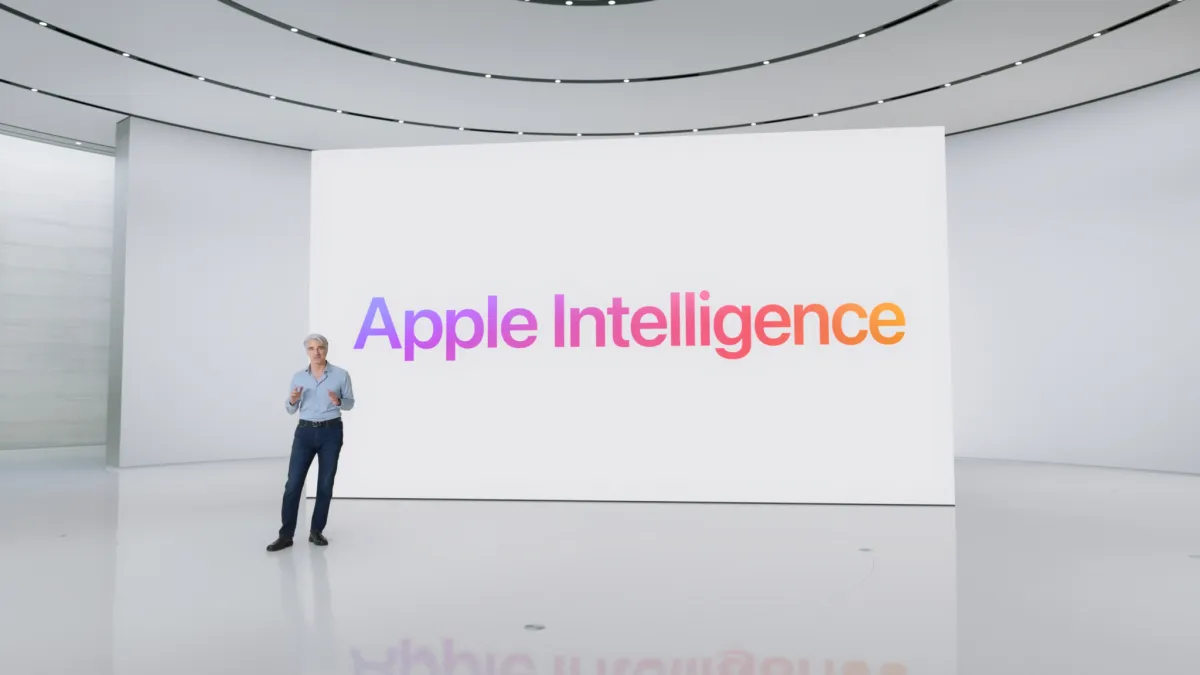Apple Intelligence: The Next Frontier in AI Integration

After months of speculation, Apple Intelligence took center stage at WWDC 2024 in June. The platform was announced amidst a torrent of generative AI news from companies like Google and OpenAI, causing concern that the famously tight-lipped tech giant had missed the boat on the latest tech craze.
Contrary to such speculation, however, Apple had a team in place, working on what proved to be a very Apple approach to artificial intelligence. There was still pizzazz amid the demos — Apple always loves to put on a show — but Apple Intelligence is ultimately a very pragmatic take on the category.
Apple Intelligence (yes, AI for short) isn’t a standalone feature. Rather, it’s about integrating into existing offerings. While it is a branding exercise in a very real sense, the large language model (LLM) driven technology will operate behind the scenes. As far as the consumer is concerned, the technology will mostly present itself in the form of new features for existing apps.
What is Apple Intelligence?
Apple Intelligence, branded as “AI for the rest of us,” is designed to leverage generative AI capabilities like text and image generation to enhance existing features. Like other platforms including ChatGPT and Google Gemini, Apple Intelligence was trained on large information models. These systems use deep learning to form connections across text, images, video, and music.
Writing Tools
The text offering, powered by LLM, presents itself as Writing Tools. This feature is available across various Apple apps, including Mail, Messages, Pages, and Notifications. It can provide summaries of long texts, proofread, and even write messages using content and tone prompts.
Image Generation
Image generation has also been integrated. Users can prompt Apple Intelligence to generate custom emojis (Genmojis) in an Apple house style. Image Playground, meanwhile, is a standalone image generation app that utilizes prompts to create visual content that can be used in Messages, Keynote, or shared via social media.
Siri's Revamp
Apple Intelligence also marks a long-awaited facelift for Siri. The smart assistant, which was early to the game, has mostly been neglected over the past several years. Siri is now integrated much more deeply into Apple’s operating systems. Instead of the familiar icon, users will see a glowing light around the edge of their iPhone screen when it’s active.
More importantly, the new Siri works across apps. For example, users can ask Siri to edit a photo and then insert it directly into a text message. This frictionless experience is a significant improvement over the previous iteration. Onscreen awareness means Siri uses the context of the content you’re currently engaged with to provide appropriate responses.
Who Gets Apple Intelligence and When?
It's too early to speak to the efficacy of the new features. While the latest batch of Apple operating systems hit public beta this week, Apple Intelligence isn’t yet fully baked. Apple had to talk it up in June to dispel concerns about its generative AI plans and to offer developers a head start.
We saw demos at WWDC, but we will have to wait until the fall to get our hands on a beta of Apple Intelligence. Fall is also when the public versions of iOS/iPadOS 18 and Mac Sequoia will hit the App Store. The offering will be free to use, provided you have one of the following pieces of hardware:
- iPhone 15 Pro Max (A17 Pro)
- iPhone 15 Pro (A17 Pro)
- iPad Pro (M1 and later)
- iPad Air (M1 and later)
- MacBook Air (M1 and later)
- MacBook Pro (M1 and later)
- iMac (M1 and later)
- Mac mini (M1 and later)
- Mac Studio (M1 Max and later)
- Mac Pro (M2 Ultra)
Notably, only the Pro versions of the iPhone 15 are getting access, due to chipset limitations in the standard model. Presumably, the entire iPhone 16 line will be able to run Apple Intelligence upon release.
Private Cloud Compute
Apple has taken a small-model, bespoke approach to training. Rather than relying on the kind of kitchen sink approach that fuels platforms like GPT and Gemini, the company has compiled datasets in-house for specific tasks, like composing an email. The biggest benefit of this approach is that many of these tasks become far less resource-intensive and can be performed on-device.
That doesn’t apply to everything, however. More complex queries will utilize the new Private Cloud Compute offering. The company now operates remote servers running on Apple Silicon, which it claims allows it to offer the same level of privacy as its consumer devices. Whether an action is being performed locally or via the cloud will be invisible to the user unless their device is offline, at which point remote queries will toss up an error.
Apple Intelligence with Third-Party Apps
Much speculation surrounded Apple’s pending partnership with OpenAI ahead of WWDC. Ultimately, however, the deal was less about powering Apple Intelligence and more about offering an alternative platform for tasks it’s not optimized for. This is a tacit acknowledgment that building a small-model system has its limitations.
Apple Intelligence is free, and so is access to ChatGPT. However, those with paid accounts to the latter will have access to premium features that free users don’t. This will likely drive more users to the already thriving generative AI platform.
Apple plans to partner with additional generative AI services. The company has indicated that Google Gemini is next on the list.
Conclusion
Apple Intelligence represents a significant step forward in integrating generative AI into everyday consumer technology. With its focus on enhancing existing features rather than introducing standalone AI products, Apple aims to offer a seamless and intuitive user experience. As the platform continues to develop, it will be interesting to see how these new AI-driven features impact the way we interact with Apple devices and services.
The announcement of Apple Intelligence at WWDC 2024 has set the stage for a new era of AI integration within the Apple ecosystem. As we await the public release in the fall, the tech world is eager to see how Apple's pragmatic approach to artificial intelligence will unfold. For now, it is clear that Apple is committed to making AI accessible and useful for everyone, staying true to its ethos of delivering innovative technology that enhances everyday life.
By focusing on practical applications and seamless integration, Apple Intelligence is poised to redefine the user experience across Apple’s suite of devices and applications. As we move towards the future, the evolution of Apple Intelligence will undoubtedly be a fascinating journey to watch.


